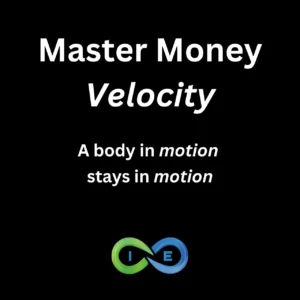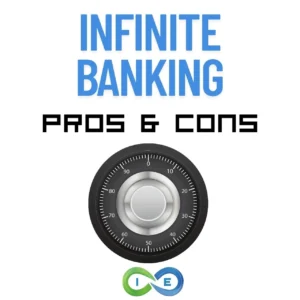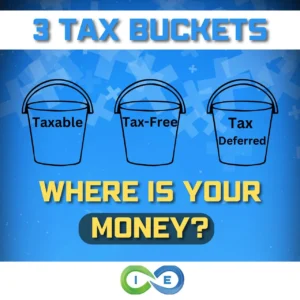Fractional Reserve Banking is an important concept to understand in order to get a clear picture on how the banking system in our society works and why a bank may not be such a safe place to store your money.
What is Banking?
Let’s start with a quick definition of banking before moving on, because it is essential to the discussion of any specific type of banking, such as fractional reserve banking.
Almost any definition of banking defines it something like this:
The business activity of protecting money owned by individuals or entities, and then using the money they are protecting to lend to others in order to make a profit.
So there are two elements to a typical bank. They take money in (in the form of deposits), and they lend money out (in the form of loans). It’s that simple.
Oh, and of course it needs to be mentioned that the money coming in needs to be protected and available when the depositor wants it.
Fractional Reserve Banking Definition
A good Fractional reserve banking definition would be a type of banking used throughout the modern world today that requires the amount of money on deposit, to be a fraction of the total amount that is on loan. For example, if a bank has $100 of deposits, they can loan out more than that amount because they only have to have a fraction in reserve.
Reserve in this context means the amount of money that is at the bank and ready for withdrawal at any moment.
And in America, you’ll be hard pressed to find any chartered bank that isn’t practicing fractional reserve banking.
Who Controls the Fractional Reserve System?
To some degree, the fractional reserve system of banking is not managed by any single entity in America. Any chartered bank in the United States is regulated by one of the following federal authorities – Federal Deposit Insurance Corporation (FDIC), the Federal Reserve Board, or the Office of the Comptroller of the Currency.
In addition, there are other agencies that regulate credit unions and of course many banks are also governed by state organizations for any given state in which they operate.
So it may seem as though control and regulation is all across the board. For the details and the minutiae, that is correct. But for the main issues that impact everyday life of depositors around the nation, the Federal Reserve Board (aka the Fed) is the location of all the control.
The Federal Reserve Board
The Fed is made up of various board members of 12 districts around the nation, some presidentially appointed members, a group of private US member banks, and advisory councils. The Fed was created by Congress in 1913 via the enactment of the Federal Reserve Act in response to a series of financial panics that seemed to occur every decade or so.
According to Congress, the Fed was given three main objectives:
- Maximize Employment
- Stabilize Prices
- Moderate Long-Term Interest Rates
As time went on the Fed was given more and more responsibility, including bank governance and oversight, government and financial institution lending, and more.
The proponents of the Fed will point out that the Fed has managed to limit the number of banking crises since it was founded to just two – the Great Depression 1930-33, and the Great Recession 2007-09. While those that criticize the roll of the Fed will state that it has far too much power and is ultimately not beholden to the people of a democratic nation.
Ultimately this is where all the big money decisions are made. Do interest rates go up? Do they go down? Do they stay the same? How much money does a bank have to have in reserve? How much money does it cost for a bank to borrow money from another bank? These questions are answered by the Fed.
And don’t think for a second that the Fed is a non-profit institution. Far from it – in fact, you could safely say that the Fed is the most successful for-profit organization on the planet. In 2015 the Fed reported it had made a record of $98.7 billion in profits. Yes, that is billion with a b.
Having said all that, I’m going to avoid the Fed debate for this article, and instead talk about those that profit the most from our current banking system.
Who Profits From the Fractional Reserve Banking System?
The main benefit of fractional reserve banking to an economy as a whole, is the velocity of money. In other words, this system helps keep money moving from one individual or entity to another. The movement of money (velocity of money) is needed for a healthy and robust economy.
During the most recent financial crises, the Fed changed the reserve requirements for member banks, and in so doing, increased the availability of funds. For those that believe in the Fed and this monetary system, they will say that things could have been much worse than they were.
So, in general, we may say that the entire economy benefits from this system, because it helps keep money moving.
Who Specifically Benefits?
But there are also some specific people that benefit from the fractional reserve system as well. Those that have access to money first, or early, can profit from this system due to the lag in inflation that happens when money is created.
WHAT?
Okay, I just threw out some new terms and concepts and we’re going to have to step back to unpack them. Stay with me here.
When a bank is able to lend out money that it does not have on deposit, it is essentially creating money out of thin air.
When money is created, in a typical financial system, prices go up (inflation) because more people have money to spend and the goods and services have remained steady.
But here is the catch, prices don’t go up right away, they take time to react to the increased money supply.
So those that have access to the new money first have more money to spend when the prices are still low (prior to rising).
So, who has first access to this money?
The BANKS. It may seem obvious now, but the reality is that the banks are those that benefit from the increased money supply because they have access to the money first.
Who is Most Likely to be Harmed by the Fractional Reserve System?
We discussed earlier that the banks benefit from fractional reserve banking by being the first to access the new money that is created by their fractional lending. So who loses? Those that are last to access the money lose in this system.
In other words, SAVERS, i.e. those that save.
WINNERS = BANKS; LOSERS = SAVERS
If you do not contribute to the velocity of money, if you hold on to your money and want to see it grow slowly in a savings account, inflation will eat away at your profits year after year.
Think about the above example – money has been created because the bank is now lending out money it did not have on deposit. This increased money supply contributes to inflation over time.
If you have money saved, your money will eventually be able to buy less and less goods and services. So savers are penalized in this system because their future dollars are going to be worth much less than they are today.
Some may argue that good savers don’t actually help the economy because they don’t move their money around.
That may be true, but they also typically don’t default on their loans, live beyond their means, and ultimately require a bailout to stay solvent.
I’m sure you can see the two sides of the argument.
What Can You Do About it?
The banks in the United States, and around the world, are not going to change from a fractional reserve banking system anytime soon. They are making too much money, and our world economy is too dependent on it to change quickly.
But for those that don’t like contributing to the system, or feel like it’s fraudulent or immoral, you can fund your purchases without approaching a typical banker. You may still want to use an independent bank for convenience sake, but for those big purchases that require financing, why not find an alternative to a big bank?
Alternative to Fractional Reserve Banking
A cash value life insurance policy can eventually become a tool for financing any and all your family and business purchases.
In fact, if you use the best whole life insurance company and fund it properly, you can pay yourself interest instead of some big corporate bank.
But using life insurance to finance your purchases via the infinite banking concept® is a topic for another article altogether. We strongly recommend you research the pros and cons of infinite banking and make your own decision.
Just be aware that the big banks that operate on the fractional reserve system and are governed by the Fed, don’t need anymore of your hard earned money. You have the ability to choose alternative forms of financing that increase your own bottom line, not theirs.
THE ULTIMATE FREE DOWNLOAD
The Self Banking Blueprint
A Modern Approach To The Infinite Banking Concept





5 comments
Nick Cagle
If you pay up early in your policy, just below the point of it becoming a MEC, can you still pay yourself interest on a policy loan down the road – growing your cash value further? Or would it then become a MEC?
Insurance&Estates
Hello Nick, the best approach is to run actual calculations to see how much additional interest can be paid into your specific policy.
For more detailed discussions, I recommend you connect with Barry at barry@insuranceandestates.com.
Best, Steve Gibbs for I&E
Mizo Stone
Awesome page, Continue the good job. With thanks.